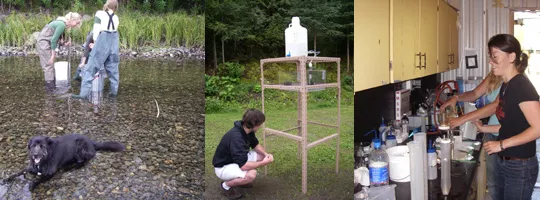
UNBC Graduate Students Supervised
- K. DaSilva MSc (in progress) Biological productivity at upwelling sites in Quesnel Lake.
- G. Lint MSc. (in progress) Lake productivity response to mine tailings waste from spills.
- K.A. Kieta (2023) Sediment fingerprinting in the Nechako watershed. PhD. Natural Resources and Environmental Studies. University of Northern British Columbia.
- A. Zweibel (2019) Spatial and trophic biomonitoring of trace metals in aquatic environments following the Mt. Polley Mine tailings spill. Master of Science Thesis. University of Northern British Columbia.
- K.A.Rasmus (2017) Seasonal movement of marine-derived nutrients in riverine surface bed sediment and the floodplain hyporheic zone. Master of Science Thesis. University of Northern British Columbia.
- J. Duros (2017) The movement of marine-derived nutrients from a salmon spawning river to a nursery lake. Master of Science Thesis. University of Northern British Columbia.
- D.G. Reiffarth (2018) Use of fatty acids for tracing soil and plants within watersheds. PhD. Natural Resources and Environmental Studies. University of Northern British Columbia.
- A.J. Koiter (2016) Geochemical tracers and the assumptions of use in watersheds. PhD. Natural Resources and Environmental Studies. University of Northern British Columbia.
- L. Vandenbusch (2015) Biological Productivity in Upwelling sites in Quesnel Lake. Master of Science Thesis. University of Northern British Columbia.
- J.S. Joe-Strack (2015) Characterizing mercury utilizing bacterial in lake cores using PCR. Master of Science Thesis. University of Northern British Columbia.
- T.I. Kunkel (2014) First Nations development and use of geothermal energy. PhD. Natural Resources and Environmental Studies. University of Northern British Columbia.
- S.J. Albers (2011) The salmon disturbance regime: Effects on biofilm, sediment and water. Master of Science Thesis. University of Northern British Columbia.
- J.F. Rex (2009) The Flocculation Loop: Delivery of Marine Derived Nutrients in Pacific Salmon Streams. PhD. Natural Resources and Environmental Studies. University of Northern British Columbia.
- D.J. Arkinstall (2005) The influence of dissolved organic carbon on aggregation and aggregate characteristics. Master of Science Thesis. University of Northern British Columbia.
- E.H. Radomske (2004) Dependencies of food web and nutrient cycling dynamics on dissolved organic matter (DOM) and inorganic nutrient concentrations in lake enclosures. Master of Science Thesis. University of Northern British Columbia
- J.L. McConnachie (2003) Seasonal variability of fine-grained sediment morphology in a salmon-bearing stream. Master of Environmental Science Thesis. University of Northern British Columbia.
- C. Luider (2003) Systemic variability in proton and copper(II) complexation by dissolved organic matter in lakes. Master of Environmental Science Thesis. University of Northern British Columbia.
- R. Poirier (2003) The relative influence of flooding and salmon spawning activities on gravel bed morphology. Master of Environmental Science Thesis. University of Northern British Columbia.
- J. Rex (2002) The development of a sampling protocol for monitoring fine grained sedimentation at forest road stream crossings. Master of Environmental Science Thesis.
- S. Biickert (1999) The effect of pulp mill effluent on fine-grained sediment morphology and storage in the Fraser River at Prince George, British Columbia. Master of Environmental Science Thesis.
- C.P. Spicer (1999) Evaluating the impacts of forest harvesting and natural disturbance events on sediment yields in small watersheds throughout British Columbia, Canada. Master of Environmental Science Thesis.
- S.C. Simmons (1997) Quantification of the major sinks and sources of phosphorus in Tabor Lake: Implications for management and remediation. Master of Environmental Science Thesis.
Examples of Past Graduate Students
Jake Duros, MSc
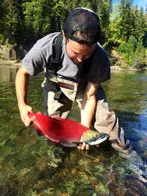
Salmon play a key role in the transportation and redistribution of marine derived nutrients (MDN) that are essential to sustain healthy aquatic and terrestrial ecosystems. Research has been conducted on the movement and storage of MDN in aquatic systems throughout the Pacific Northwest; however, previous research seems to vary in whether MDN has a beneficial, neutral, or detrimental impact on aquatic ecosystems. My research will help determine seasonal differences in the transport and distribution of MDN to a nursery lake system. A sampling strategy has been designed to evaluate the temporal and spatial distribution of MDN delivered from the Horsefly River into Horsefly Bay on Quesnel Lake, British Columbia, which supports a significant sockeye salmon stock. Understanding the role MDN play in primary and secondary productivity in nursery lakes is important in the management and conservation of juvenile salmon that rear in these systems.
Leah Vanden Busch, M.Sc.
(Supervisors: Drs. Ellen Petticrew & John Rex)
Every year, millions of sockeye salmon travel hundreds of kilometres from the Pacific Ocean to their natal spawning grounds in the Quesnel watershed. The nutrient-poor freshwater systems in which they spawn receive an influx of marine-derived nutrients (MDN) upon the arrival of the salmon. These additional nutrients provide an important source of energy to enhance fish and aquatic productivity, as well as riparian wildlife and plant species. My research will investigate the hyporheic zone as an effective location of nutrient exchange between the streambed and riparian vegetation. The objectives will be to quantify concentrations of MDN present in hyporheic water samples, subsurface macroinvertebrates, and riparian vegetation throughout the 2011 spawning season and succeeding winter. In light of this research, we can gain a more comprehensive understanding of hyporheic nutrient exchanges that will facilitate better restoration and stream management decisions for the health of the ecosystem for future salmon stocks.
Titi Kunkel Ph.D.
Thesis successfully defended and graduated in May 2015.
(Co-supervisors: Ellen Petticrew and Bob Ellis (committee members Greg Halseth, Antonia Mills, UNBC and Mory Ghomshei, UBC)
Geothermal resource is at an infancy stage of its development in Canada. The resource was identified as having the potential to meet the future energy demands of the country and to provide sustainable economic development for communities. Aboriginal communities in the Cariboo Chilcotin region of British Columbia are seeking ways to build, diversify, and to sustain their economies. The region has been identified has having moderate to good potential for the resource development. The limited understanding of Aboriginal values has contributed to resource development conflicts in the region. The objectives of this collaborative study are to understand Aboriginal values as it relates to resource development, to assess the compatibility of these values and geothermal resource development within the region, and to contribute to alternative energy development knowledge.
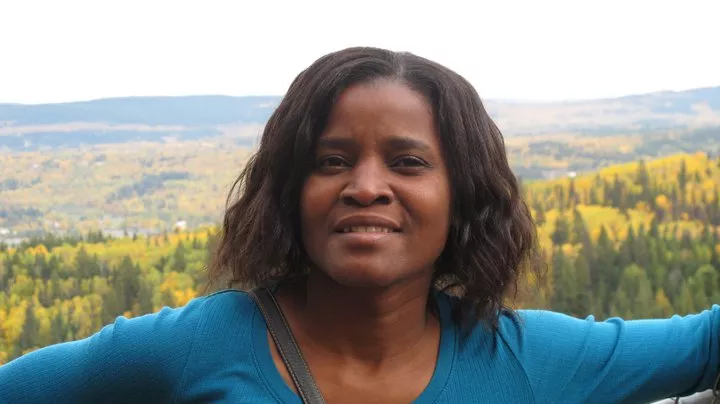
Titi Kunkel in the Cariboo Region of BC
Dominic Reiffarth Ph.D.
(Supervisors: Ellen Petticrew and Phil Owens)
Dominic is investigating the use of plant-derived very long chain fatty acids (VLCFAs) as potential soil and sediment tracers. The tracing technique requires the use of compound-specific stable isotopes (CSSIs), namely the isotopic ratio of carbon-13 to carbon-12 of specific VLCFAs.
For additional information, please visit: http://unbc.ca/~dreiffar/research_cur.php
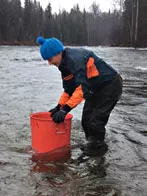
Kristen Rasmus, MSc
River riparian and channel bed storage of marine derived nutrients
Alex Koiter Ph.D.
(Supervisors: Ellen Petticrew and Phil Owens)
Increases in erosion rates and sediment loads within watersheds can cause serious environmental problems. Currently, the goal of research is to understand the source, fate, and transport of sediment mobilized within a watershed. This information is critical to developing and targeting management strategies that will reduce erosion rates and sediment loads. Sediment tracing is an emerging technique being used to help address these issues. This technique is based on the assumption that one or more of the properties of the sediment will reflect the source form where it originated from and can be used as a tracer to trace the sediment back to its sources. However, the processes that link the sediment sources to the point of collection are not well understood or quantified and currently there is an underlying assumption of a direct link between hill slope and downstream sediment in terms of property conservativeness. The main objectives of this research are to test the assumptions of tracer conservativeness by investigating how the physical and geochemical properties of sediments change as it moves though each of the three key areas of the landscape; the hill slopes, riparian zones and river channels. These objectives will be addressed with both field and experimental studies using the facilities at UNBC's Quesnel River Research Centre and field sites within the Quesnel River watershed.
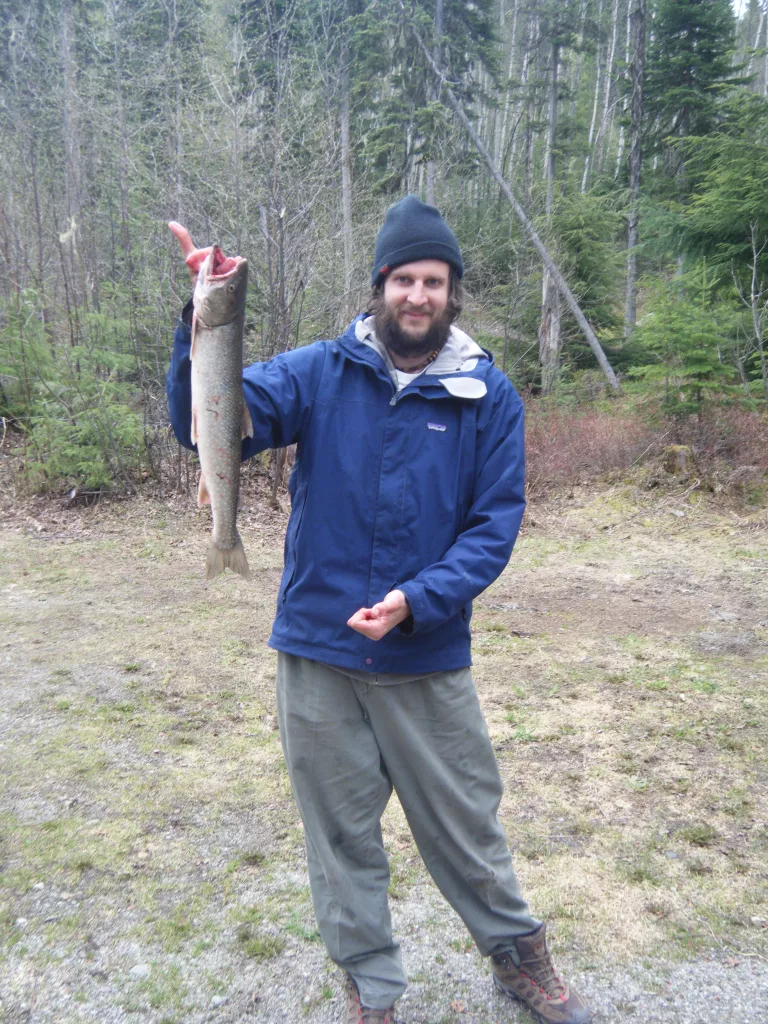
Alex Koiter in the Cariboo Region of BC
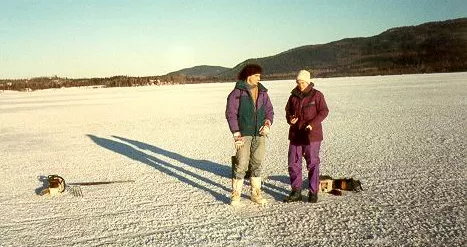
Sean Simmons and Ellen Petticrew sampling Tabor Lake